Related Tags
The best guitar pedals to buy in 2023: 16 best tremolo pedals
Looking for a tremolo pedal? Luckily, the pedal world is full to the brim with great effects aimed at every budget and every style.
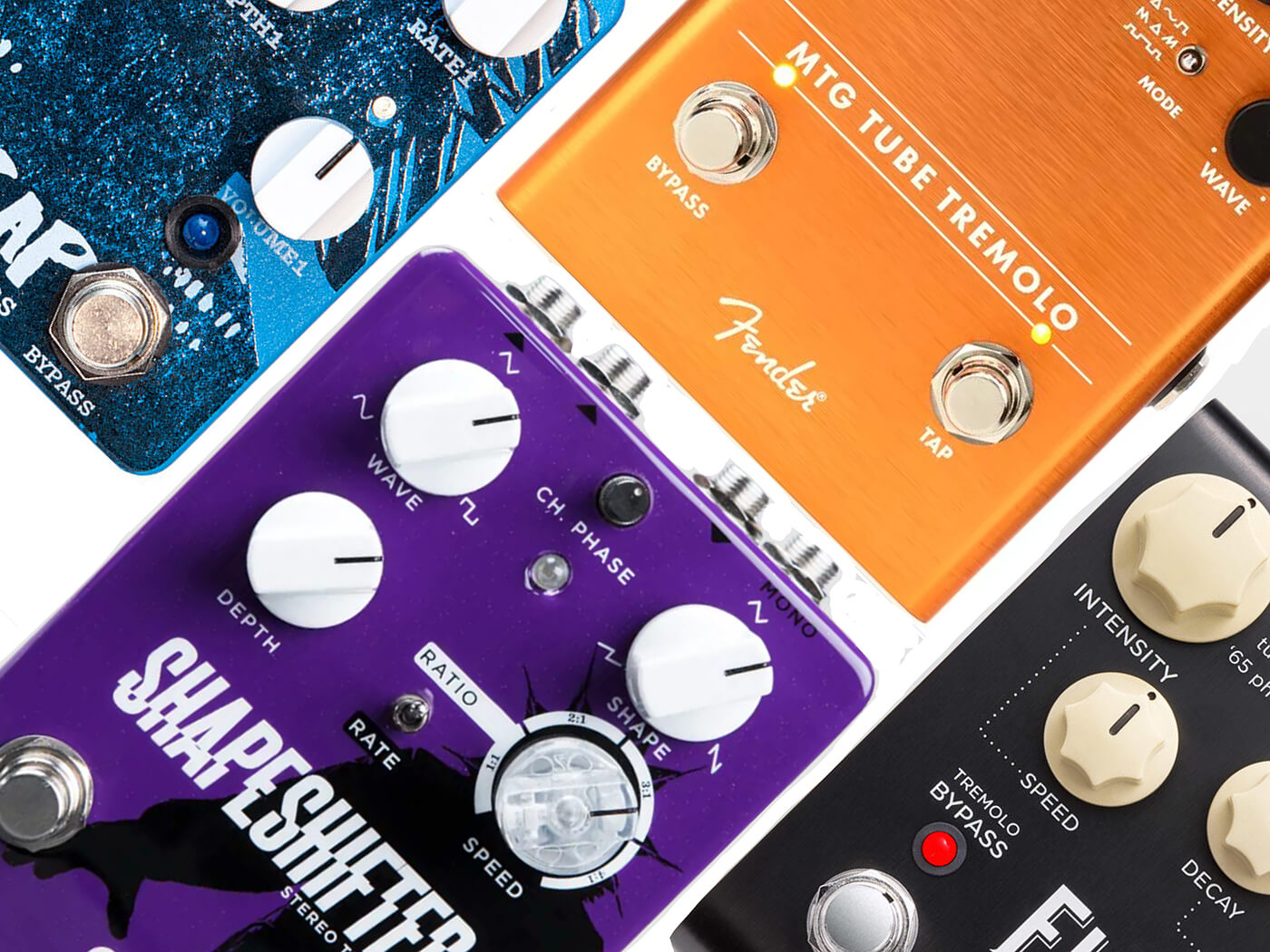
Whether you’re trying to do your best Johnny Marr impression or want stomach-churning wobble, here are the best tremolo pedals you can buy today, from budget-friendly mini pedals to vintage-inspired stalwarts.
What to look for when buying a tremolo pedal
If you’re new to tremolo pedals, there are a few terms that will come up in this list that could prove confusing. LFO will be a familiar acronym to those from the futuristic world of synthesisers, but for the benefit of us primitive guitar-strummers, it stands for Low-Frequency Oscillator. This generates a sub-audio frequency signal, according to which the volume of your guitar’s signal is modulated. Effectively, a tremolo pedals’ LFO is its beating heart.
A couple of the common controls are self-explanatory: rate is how fast the LFO oscillates, depth is how much of an effect it has on your signal’s volume. Simple enough.
A little less obvious, and a little less common, is the control for ‘waveform shape’, which determines the behaviour of the LFO across a given cycle. A triangle wave will give a constant rise and decline in volume, a sine wave will accelerate and decelerate, and a square wave will sound choppy, with instantaneous jumps in volume level. Some pedals will even offer a random wave, or the ability to blend different wave shapes.
Harmonic tremolo vs Amplitude tremolo: What’s the difference?
Harmonic tremolo is another phrase that will come up a lot in this list, and it’s good to understand how it differs from regular tremolo. In a case of non harmonic tremolo, the LFO will affect the amplitude of your entire signal. In the case of harmonic tremolo, your signal is split into two different frequency components: bass goes one way, treble the other. These are then modulated differently and then summed back together for a swirling, pulsating effect.
Because of the troughs alongside the peaks, traditional amplitude tremolo can trick the ear into perceiving a much lower average volume. With harmonic tremolo, on the other hand, there’s less of a drop in perceived volume due to two signal paths working in tandem.
The best tremolo pedals to buy in 2021 at a glance
- Jam Pedals Harmonious Monk
- Keeley Hydra
- Old Blood Noise Endeavors Whitecap
- Fender Tre-Verb
- Mr Black Mini Tremolo
- Origin Effects RevivalTrem
- Fender MTG Tube Tremolo
- Kingsley Bard
- Voodoo Labs Tremolo
- Catalinbread Pareidolia 2
- Seymour Duncan Shape Shifter
- Walrus Audio Monument V2 Harmonic Tremolo
- Mooer Trelicopter
- Fender MTG tube Tremolo
- Stone Deaf Tremotron
- Strymon Flint
JAM Pedals Harmonious Monk
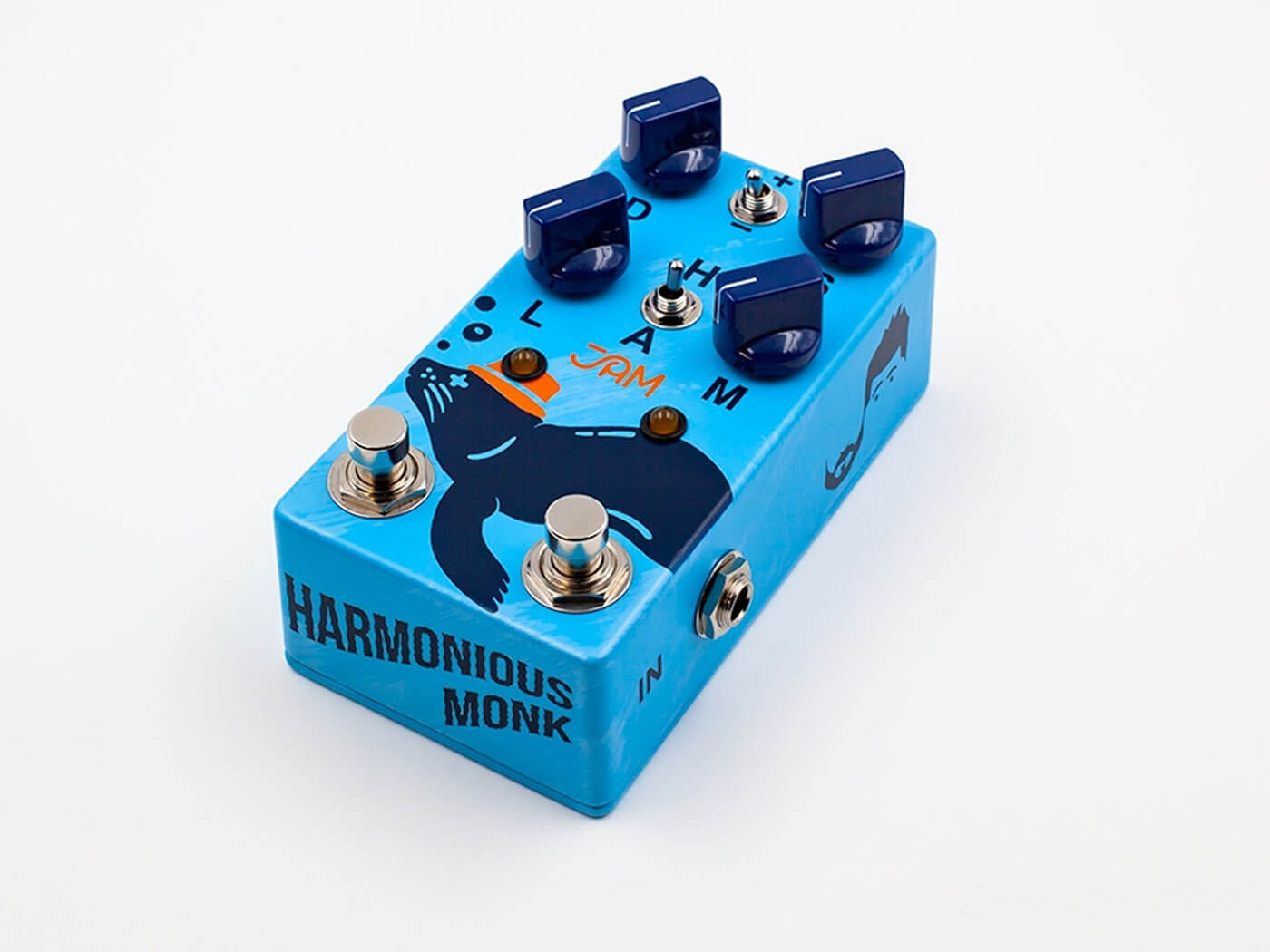
+ Versatile tremolo sounds with both amplitude and harmonic modes
+ Ability to tweak EQ and output level means you don’t have to combine with a boost
– Focus on old-school analogue sounds might deter some
Created in collaboration with Dan and Mick of That Pedal Show, the JAM Pedals Harmonious Monk is a love letter to all things tremolo. The LFO works in two core modes: ‘+’ or ‘-’, which let you pick between full-on choppiness and subtle pulsing.
Despite the name, the pedal isn’t just a harmonic tremolo, either. A second toggle switch allows you to change between harmonic and amplitude modes. Keeping with the ‘dual’ theme, the second footswitch also lets you double the LFO’s speed.
Inside, you’ll find some trim pots for the EQ, while the face of the pedal bears a knob for output level, added to compensate for the drop in perceived volume that tremolo effects can lead to.
Price: $259/£229 Description: Dual mode harmonic and amplitude tremolo Controls: Two footswitches for selecting different LFO speeds, toggles for intense/subtle and harmonic/amplitude modes, knobs for depth, rate, level and mix, internal trim pots for EQ adjustment Bypass: True bypass Mono or stereo: Mono Tap tempo: No
Read our full review of the JAM Pedals Harmonious Monk here.
Keeley Hydra
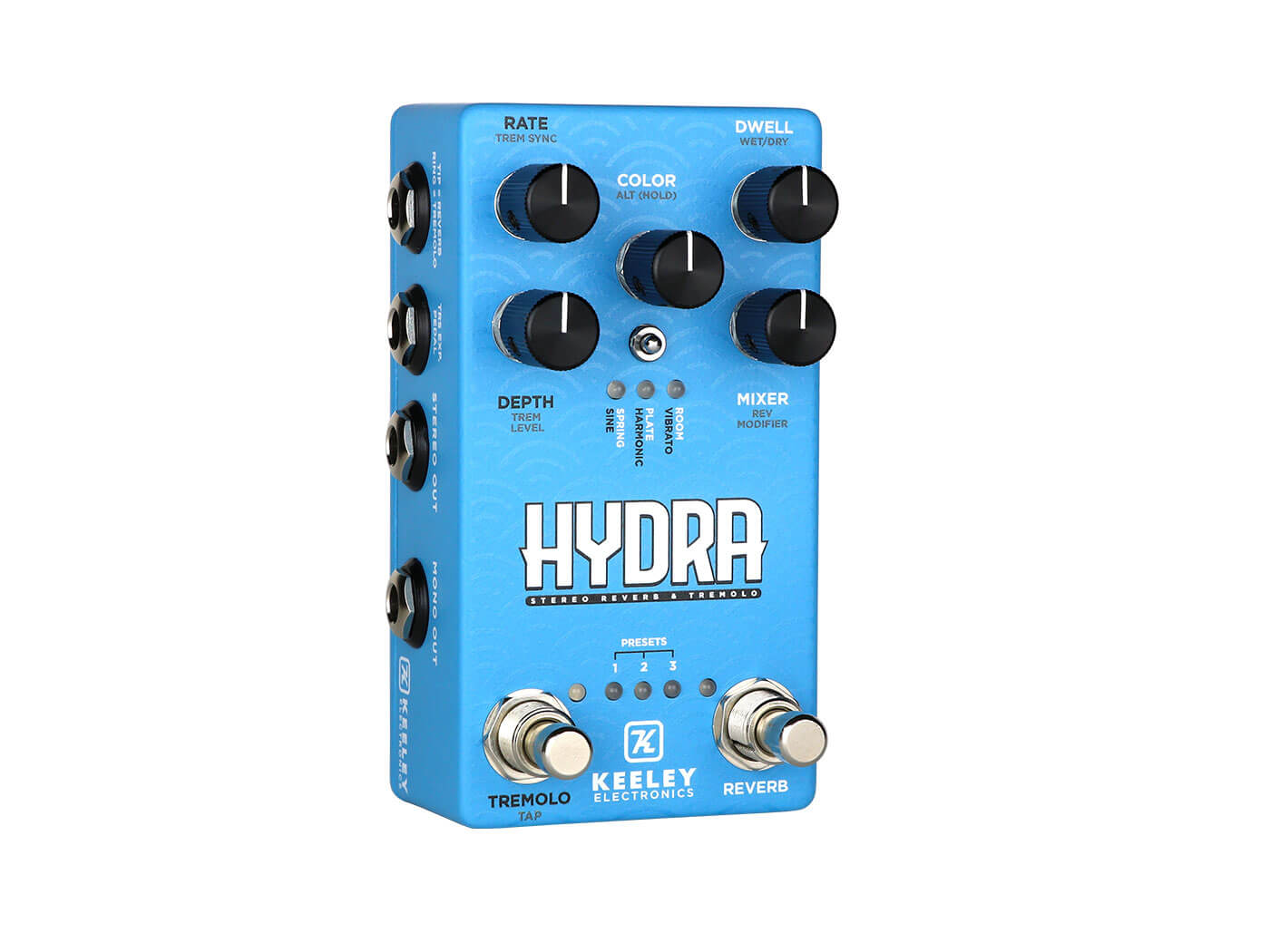
+ Incredibly deep level of editing available
+ Several effects in one
– Pure tremolo feature set could be bigger
The Keeley Hydra isn’t just a tremolo – it’s also a three-mode reverb, a vibrato and can probably protect a golden fleece in a pinch, though that might void the warranty. There’s a pair of footswitches, one for the reverb side of things and one for the tremolo. A multi-function switch toggles between reverb types as well as between vibrato, harmonic tremolo and sine-wave amplitude tremolo.
The time-based side works with tap tempo, too, and the secondary controls don’t stop at that multi-function toggle – each knob has an extra trick up its sleeve. It’s a versatile box, especially for its size, made all the more impressive by the fact that it works with external tap or expression pedals, has stereo inputs and outputs, and offers presets to boot. Where does it keep all that circuitry?
Price: $/£249 Description: Dual tremolo and reverb pedal with multiple modes for both effects Controls: Footswitches for both reverb and tremolo (tremolo footswitch doubles as tap-tempo), selector switch for reverb and tremolo modes, tremolo depth and rate knobs, reverb mix, colour and dwell knobs Bypass: True bypass Mono or stereo: Stereo Tap tempo: Yes
Walrus Audio Monument V2 Harmonic Tremolo
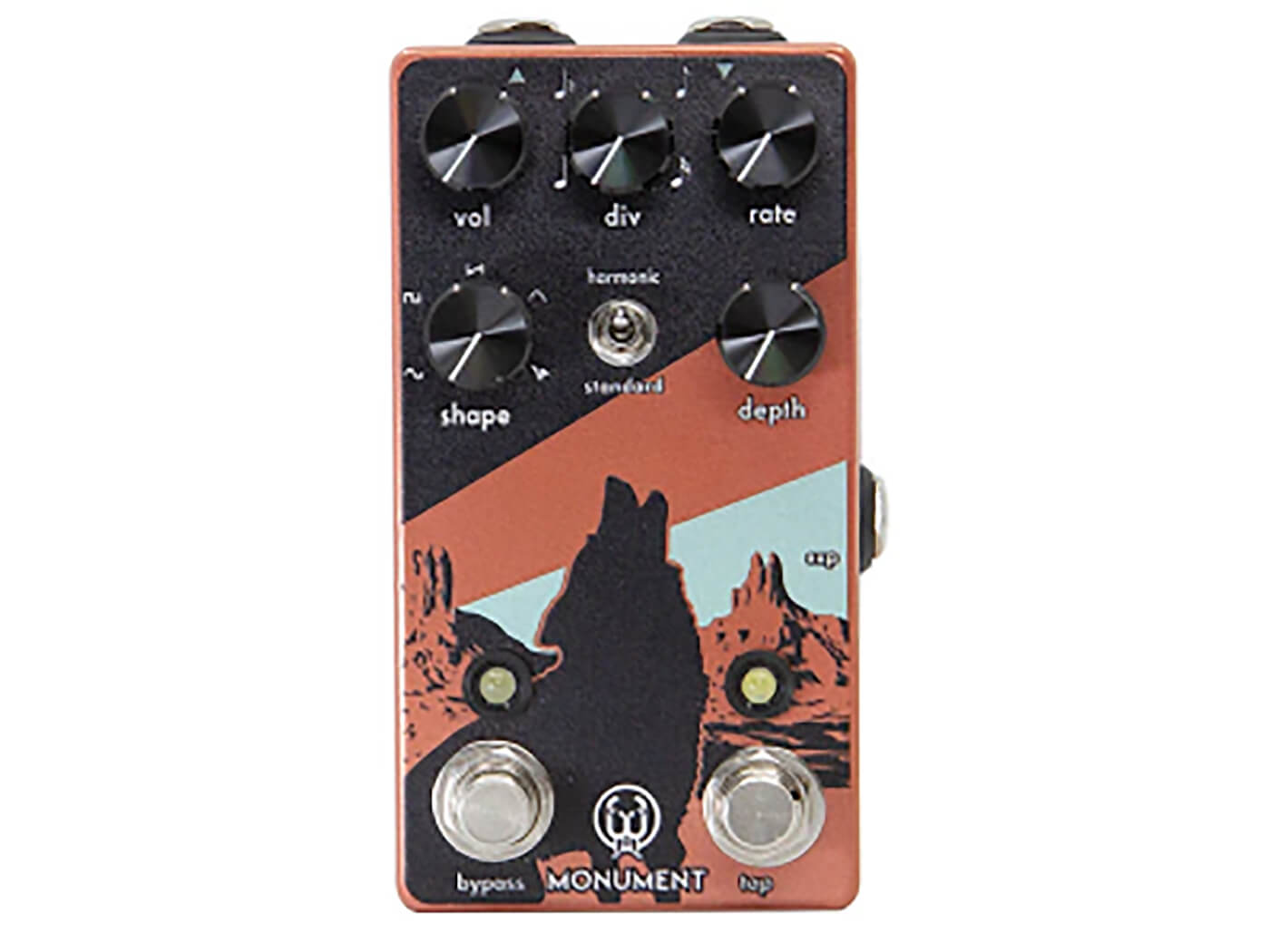
+ Tap tempo on harmonic tremolo is rare
+ External expression and tap jack
– Wealth of features means it’s more expensive
The Walrus Audio Monument V2 is a multi-faceted tremolo from one of the US’ leading boutique builders, inspired by the otherworldly sandstone formations of Monument Valley.
Rate, depth and volume knobs make up the bare minimum for a tremolo pedal these days, but as well as these, the Monument sports Shape and Div controls, a side-mounted expression/tap pedal input jack, two footswitches (bypass and tap) and a Harmonic/Standard mini toggle switch, enabling access to the pedal’s two voices.
Harmonic tremolo is pretty rare in pedal form, offering grittier textures usually associated with old Brownface amps. Selecting this voice embellishes both chordal and single-note work with beautifully nuanced, almost phased movement. This pedal provides a sophisticated take on some classic and contemporary tremolo textures, with boutique quality to match.
Price: $199/£225 Description: Harmonic tremolo pedal with varied waveform shapes and expression controls Controls: Toggle switch for harmonic/amplitude modes, knobs for wave shape, tremolo rate, tap division and overall volume Bypass: True bypass Mono or stereo: Mono Tap tempo: Yes
Read our full review of the Walrus Audio Monument V2 here.
Old Blood Noise Endeavors Whitecap
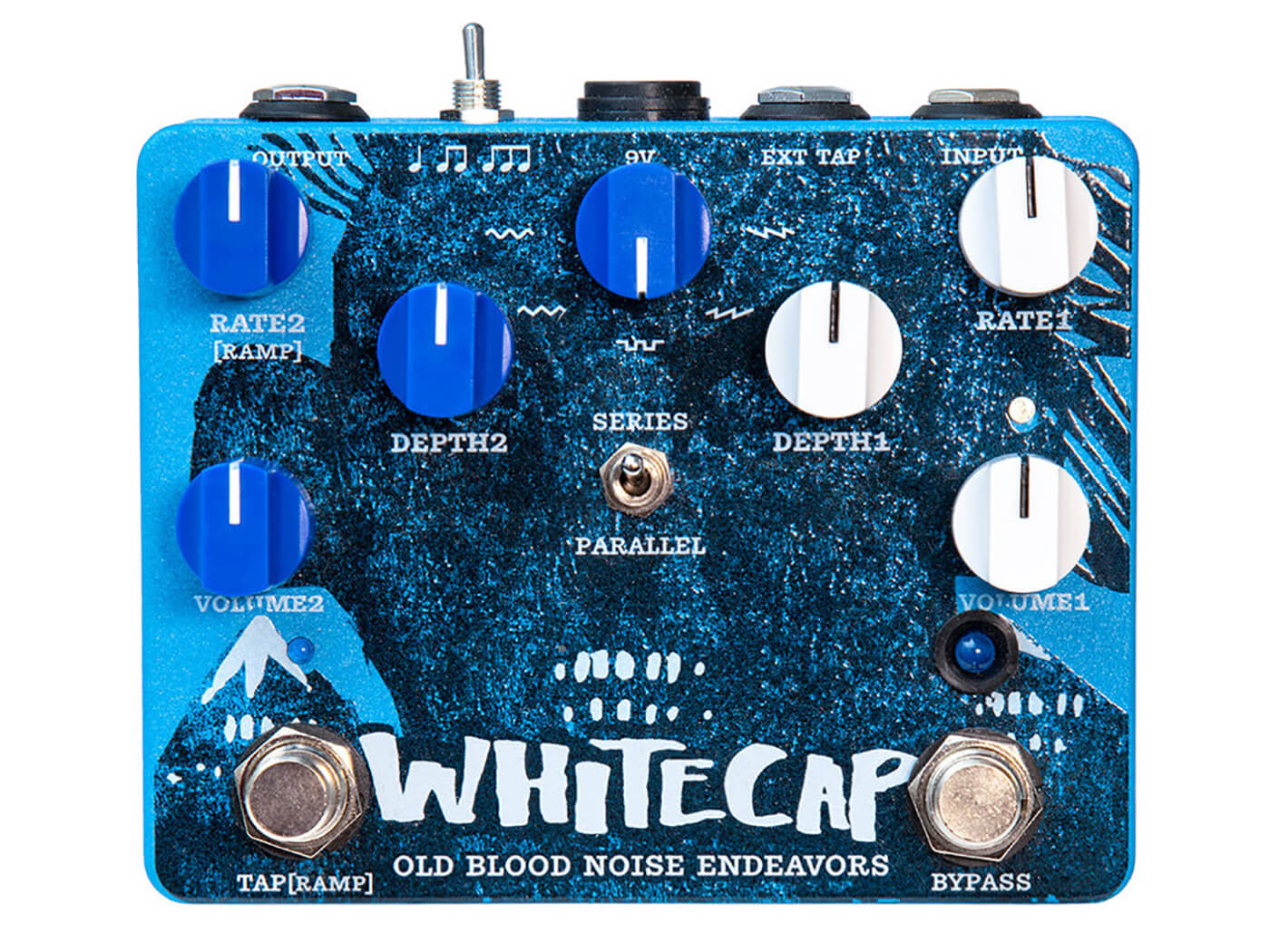
+ Best of both analogue and digital
+ Entirely unique sounds on offer
– Large footprint, especially if you want to just make use of its traditional sounds
The Old Blood Noise Endeavors Whitecap is two tremolos at the same time, but not in the way that harmonic tremolo is. Its two sides are asynchronous, meaning their rate knobs don’t care at all what the other is doing.
Maybe the frayed relationship began when one side realised the other is digital, while it itself is analogue. Maybe the analogue side envied the digital side’s tap tempo functionality and wider selection of waveform shapes. Or maybe the digital side simply didn’t like the analogue side’s slightly warmer tone. We’ll never know, but it’s an interesting pairing, and offers the best of both worlds in one pedal.
You can run the two sides alongside each other in parallel mode, or in series, and each has its own volume control for blending to your taste.
Price: $199/£219 Description: Dual tremolo pedal with one analogue engine and one digital engine Controls: Digital tremolo: rate, waveform, depth and volume knobs, tap division selector switch; Analogue tremolo: depth, rate and volume knobs Bypass: True bypass Mono or stereo: Mono Tap tempo: Yes (on the digital side)
Mr Black Mini Tremolo
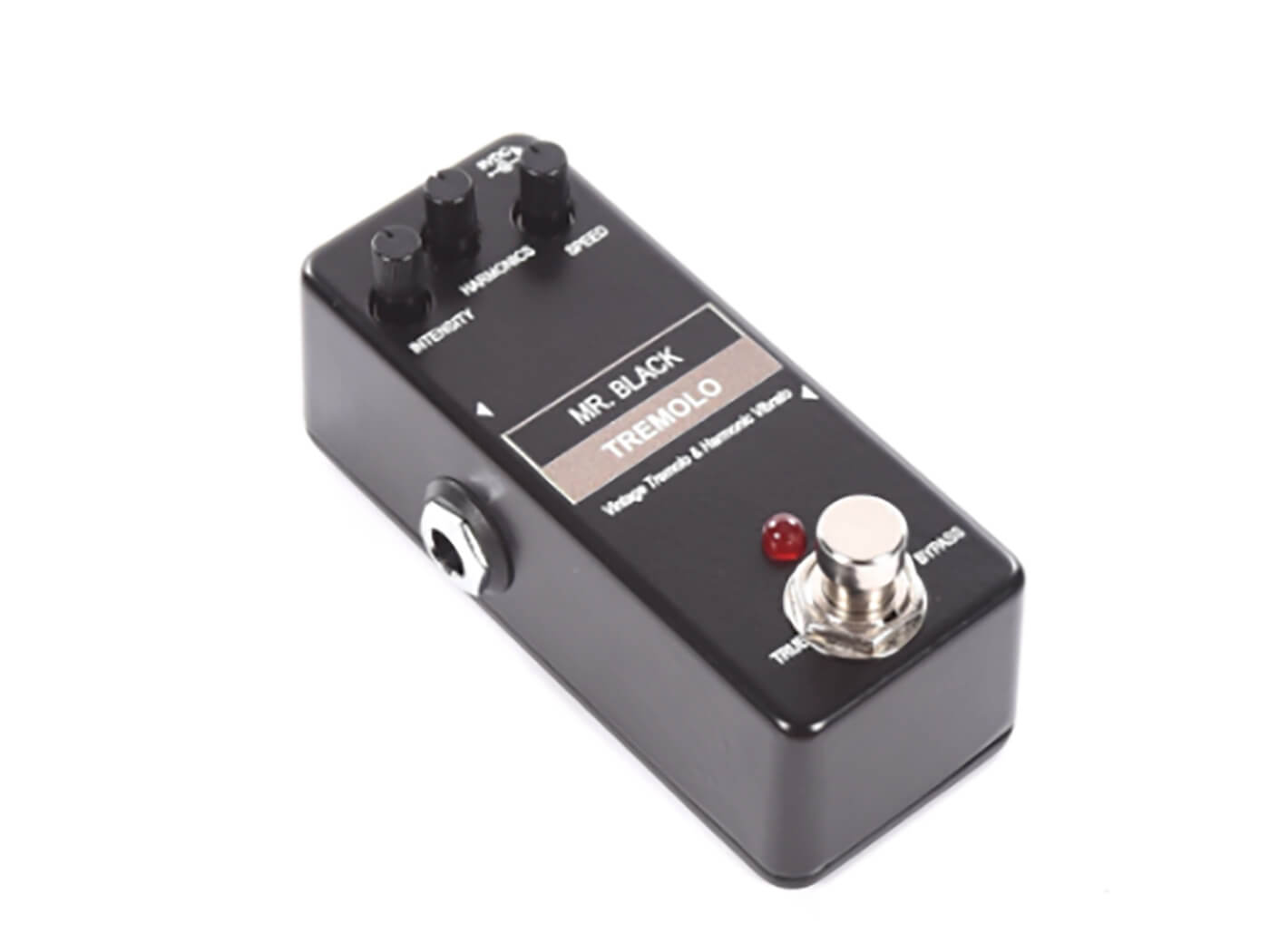
+ Handmade
+ Compact and relatively affordable
– No level control
Mr Black’s Mini Tremolo keeps things simple and compact. Its circuitry emulates a tube bias tremolo, with a smooth wave character and controls for intensity, speed and harmonics. That last control introduces a blend of harmonic tremolo. Having the harmonic aspect editable via a knob is an interesting choice, as it allows you to keep things subtle in that department if you so wish. On the other hand, you can crank the harmonics knob for full woozy modulation.
Price: $/£139 Description: Compact handmade amplitude and harmonic tremolo pedal Controls: Depth, rate and harmonics knobs Bypass: True bypass Mono or stereo: Mono Tap tempo: No
Origin Effects RevivalTrem
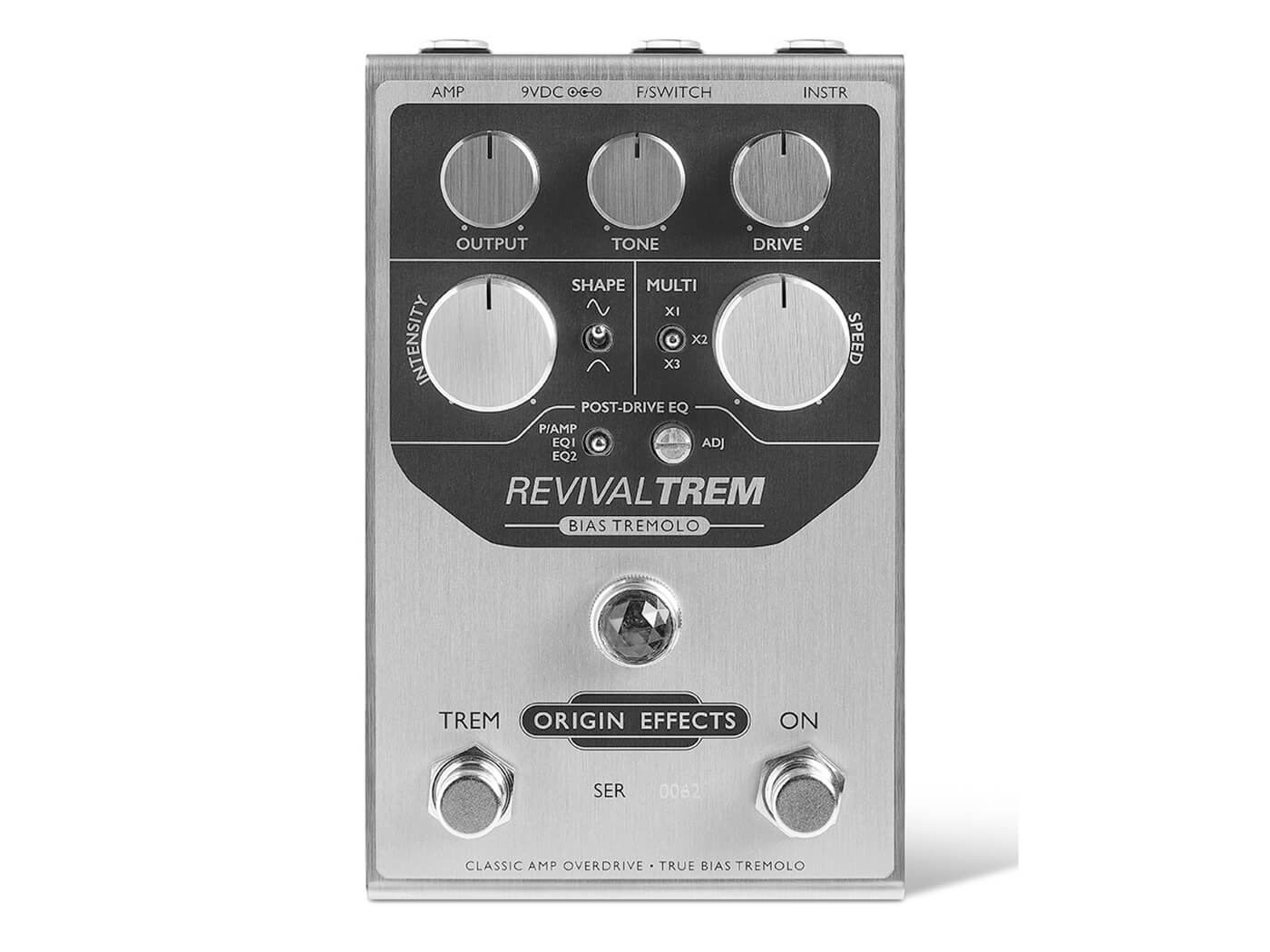
+ Complete old-school Fender amp sound in one unit
+ No holds barred when it comes to sound quality
– Expensive
There are two core sides to the Origin Effects RevivalTrem. One, an old-school amp preamp drive tone, and the other, a loving homage to the sound of power tube bias tremolo. The former has controls for output, drive and tone, while the latter has toggle switches for wave shape and speed multiplier, as well as knobs for intensity and rate.
Pairing these two effects together makes this pedal a complete ‘vintage Fender in a box’ rather than just a tremolo pedal, and handily the RevivalTrem works great when plugged straight into an audio interface.
The price means it’s certainly not for beginners, but if you’re looking for a no-compromises vintage amp sound on your ’board, this might well be it.
Price: $459/£360 Description: Harmonic tremolo and overdrive pedal Controls: Output level, tone, drive; tremolo intensity and speed with two-way shape and three-way tempo division switches; three-way post-drive EQ switch with treble adjustment knob; tremolo on/off and bypass footswitches Bypass: True bypass Mono or stereo: Mono Tap tempo: No
Read our full review of the Origin Effects RevivalTrem here.
Fender MTG Tube Tremolo
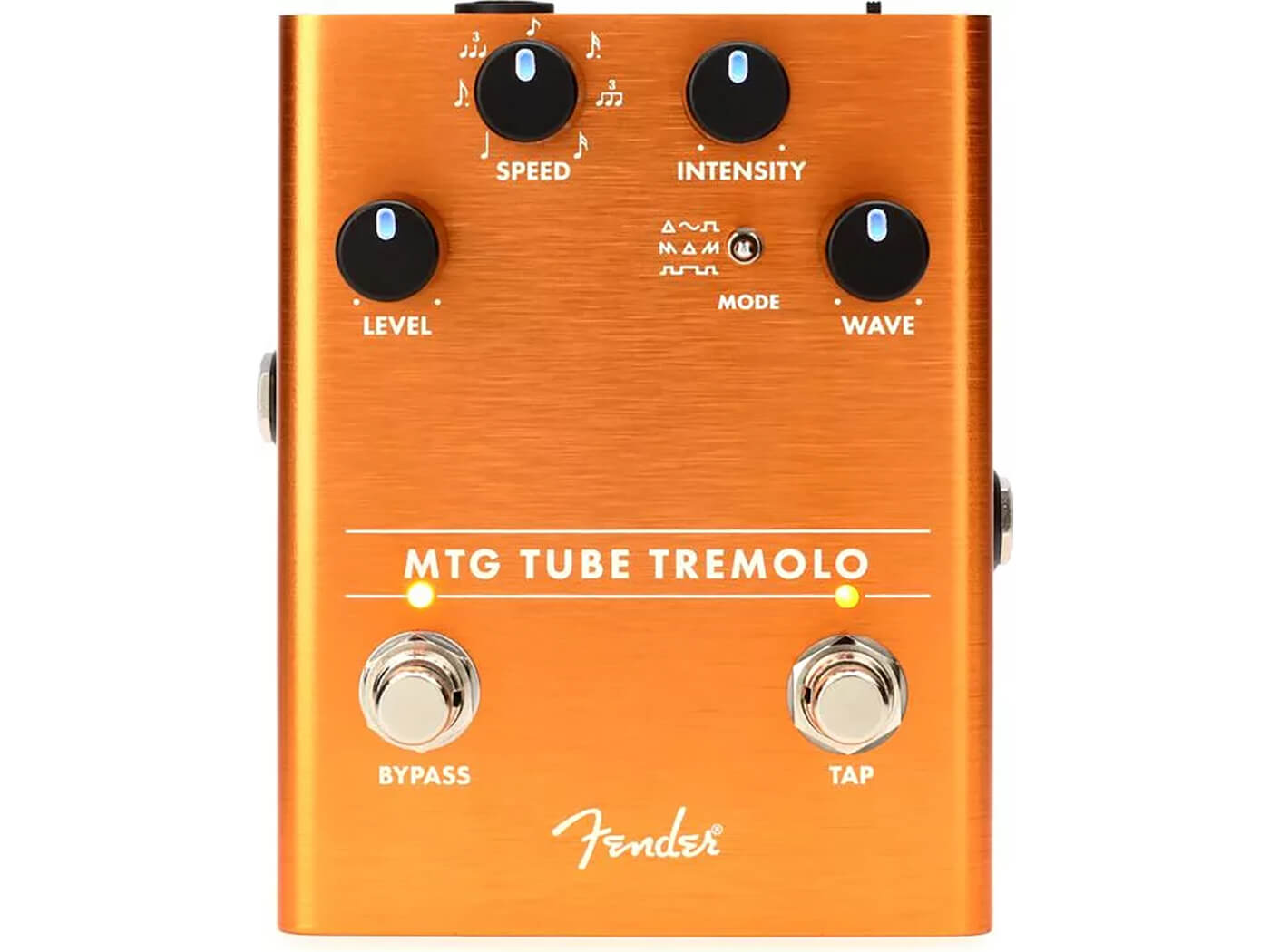
+ Real glowing glass inside
+ In-depth controls
– Requires you to maintain a tube
A lot of the classic tremolo sounds can be traced back to Fender amplifiers, so who better to take on a bona fide tube tremolo sound than the brand itself?
With an NOS 6205 preamp tube, you might think that the MTG Tube Tremolo would keep things simple. Far from it. There’s a plethora of wave shapes to choose from, which can be further refined by the Wave knob as well as a dedicated tap tempo footswitch and dedicated level control. There’s even a division selector knob, with options such as triplets and dotted quarter notes – perfect for syncing up with a delay.
Price: $199.99/£159.99 Description: Tube-powered tremolo pedal with customisable wave shape and tap tempo Controls: Knobs for tremolo level, speed, intensity, waveform shape, tap division, toggle switch for further waveform customisation, tap tempo footswitch Bypass: True bypass Mono or stereo: Mono Tap tempo: Yes
Kingsley Bard

+ Simple, straightforward and fully analogue
+ Real tube bias tremolo
– Comes with the issues of running a real tube
The Kingsley Bard is basically an amp tremolo in a stompbox. Running a single 12AX7 valve at 275 volts, the circuit generates a Princeton-style bias modulated tremolo effect. Controls are straightforward, with speed and depth. There’s also a volume control to compensate for perceived level drop with tremolo engaged – or used as a clean boost.
Price: $300 Description: Power tube bias tremolo with straightforward control sets
Controls: Level, rate and depth knobs Bypass: True bypass Mono or stereo: Mono Tap tempo: No
Voodoo Labs Tremolo
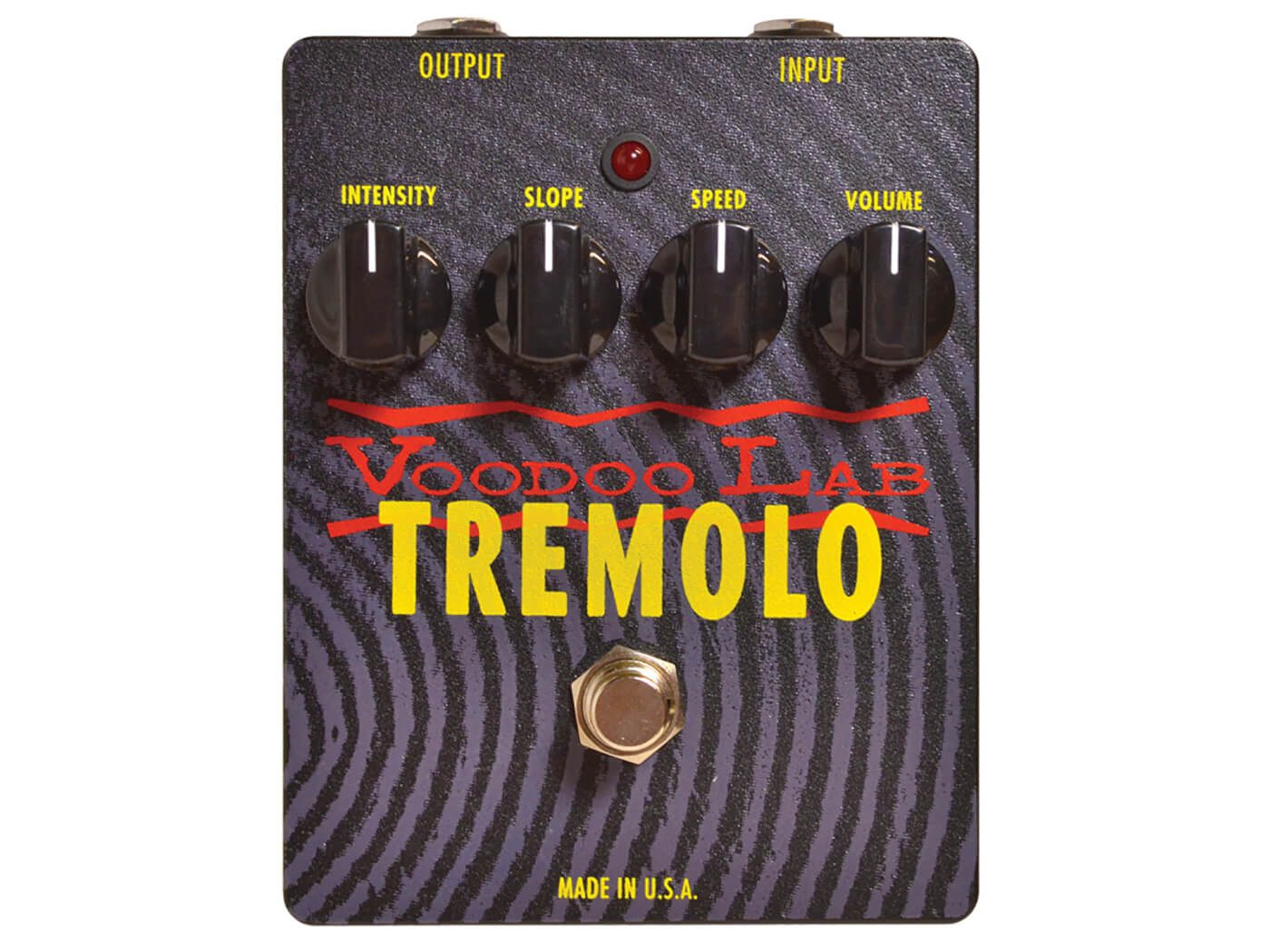
+ Affordable
+ Slope control offers gradual shift between wave shapes
– Photocell and lamp circuitry mean it could be more compact
To recreate the black-panel and Silverface tremolo, Voodoo Lab used an identical lamp and photocell assembly. The slope control adjusts the feel from smooth and vintage to ‘machine-gun stutter’. Along with speed and intensity, there’s a volume control to cut or boost the output level.
Price: $100/£109 Description: Photocell / lamp-powered optical tremolo with adjustable wave shape Controls: Knobs for intensity, shape, speed and volume Bypass: True bypass Mono or stereo: Mono Tap tempo: No
Catalinbread Pareidolia 2
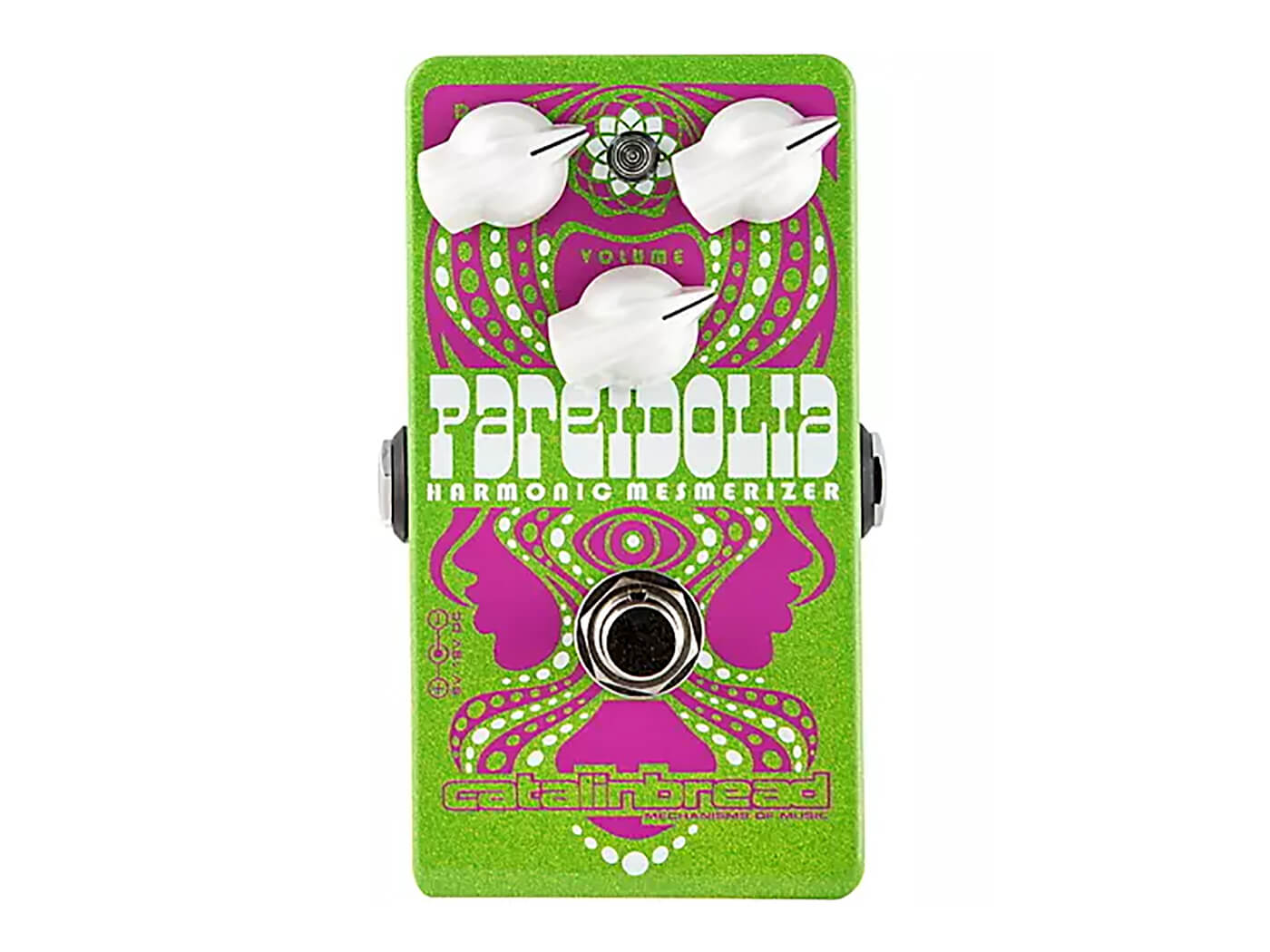
+ Much more affordable and reliable than the old triple-valve tremolo from a Fender twin
+ Rich harmonic tremolo sounds
– Some might want a more in-depth set of controls
With three valves and complex circuitry, the tremolo circuit used in the Brownface Fender Twin, Pro and Concert didn’t last for long, but this harmonic tremolo remains the ultimate for many. The Catalinbread Pareidolia 2 is designed specifically to replicate Fender’s ‘harmonic tremolo’, and the controls include speed, depth and volume.
Price: $200/£153 Description: Harmonic tremolo aimed at recreating an old-school amp vibrato/tremolo effects Controls: Volume, depth and rate knobs Bypass: True bypass Mono or stereo: Mono Tap tempo: No
Seymour Duncan Shape Shifter
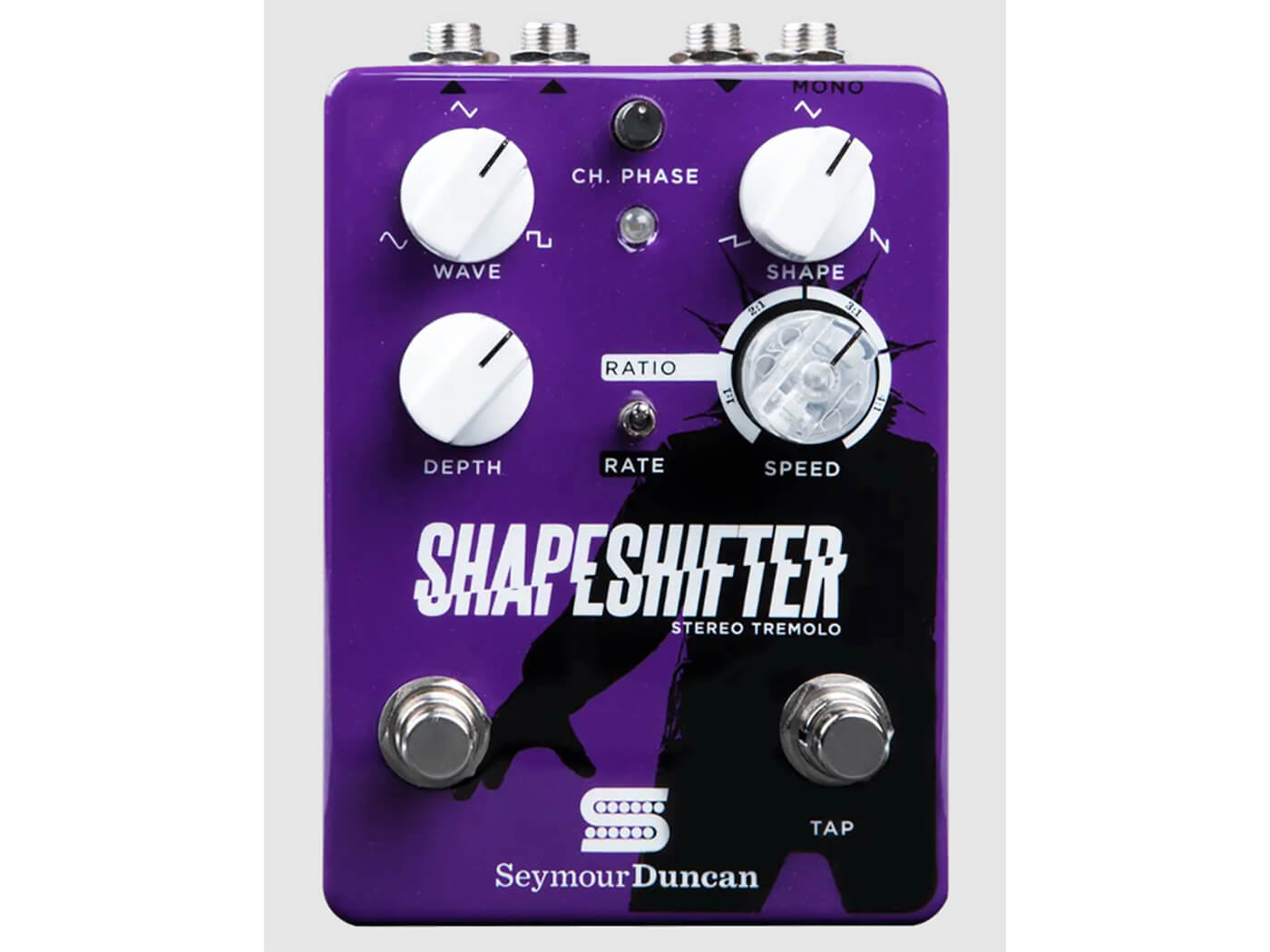
+ Stereo operation
+ Versatile
– Not for those looking for an ‘out-of-the-box’ tremolo sound
One for the pathologically indecisive, because it promises to be ‘every type of tremolo’ in a box. Features include depth, rate shape, wave and phase. The Seymour Duncan Shape Shifter also has stereo inputs and outputs, plus tap tempo for easy synchronisation.
Price: $246/£259 Description: Amplitude tremolo with stereo phase adjustment and deep wave control Controls: Knobs for wave type and shape, tremolo rate/tap ratio and depth, balance knob for adjusting stereo LFO phase balance Bypass: True bypass Mono or stereo: Stereo Tap tempo: Yes
Mooer Trelicopter
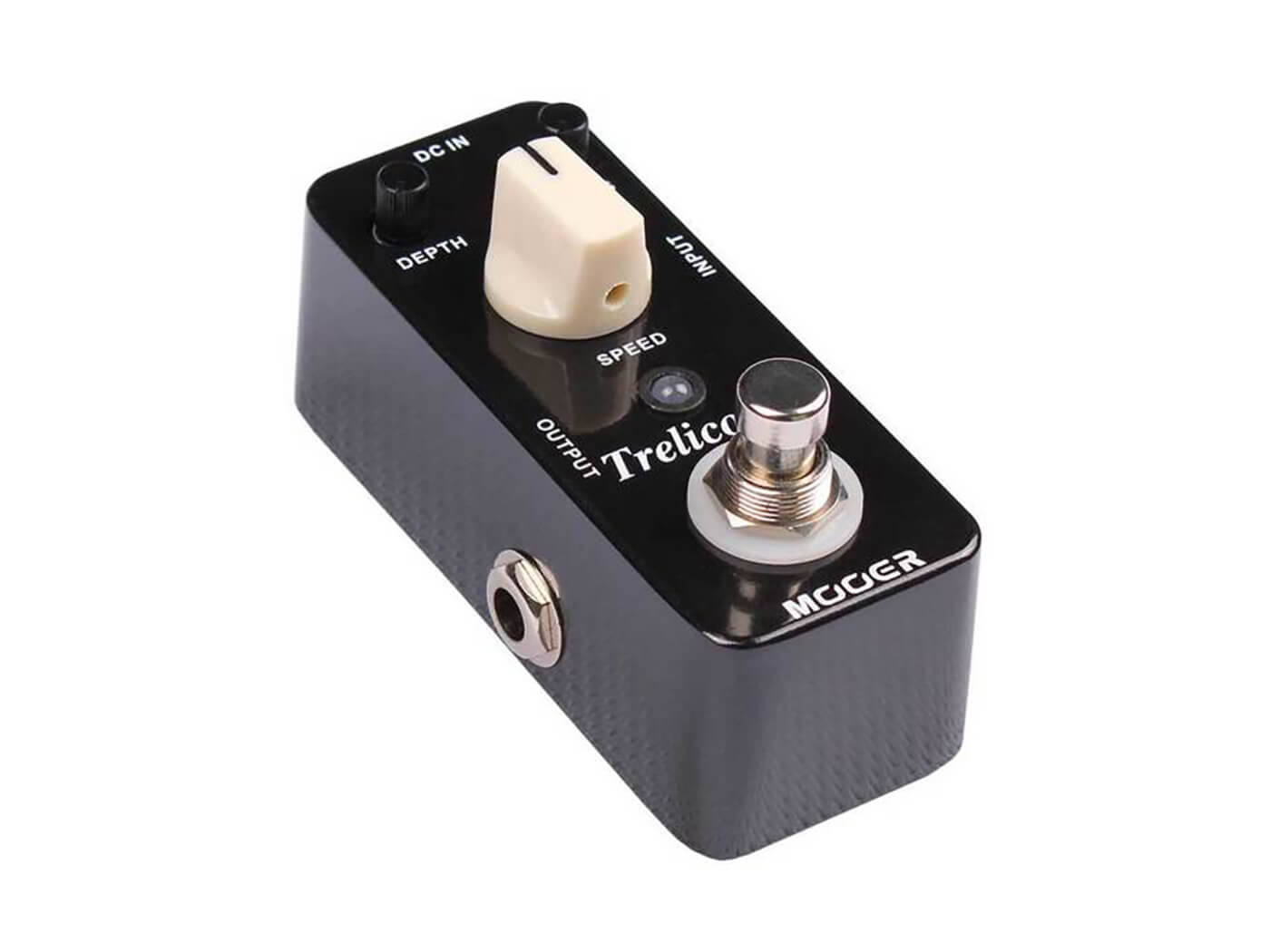
+ Great if you want to try tremolo sounds at low risk
+ Very affordable and ideal for beginners
– There are better-sounding pedals out there
The super compact Mooer Trelicopter is revered not just for its size but also for the quality of tones available at this price point. The cheapest pedal on this list by some distance, it’s equipped with three straight-forward dials in depth, bias and an overall level. It’s on-board vintage-style tube tremolo has no discernable volume drops, and while some users have reported an LFO click as a potential disadvantage, the price once again still makes this an option worth considering.
Price: $/£42 Description: Simple amplitude mini-pedal Controls: Tremolo depth, bias and speed Bypass: True bypass Mono or stereo: Mono Tap tempo: No
Stone Deaf Tremotron
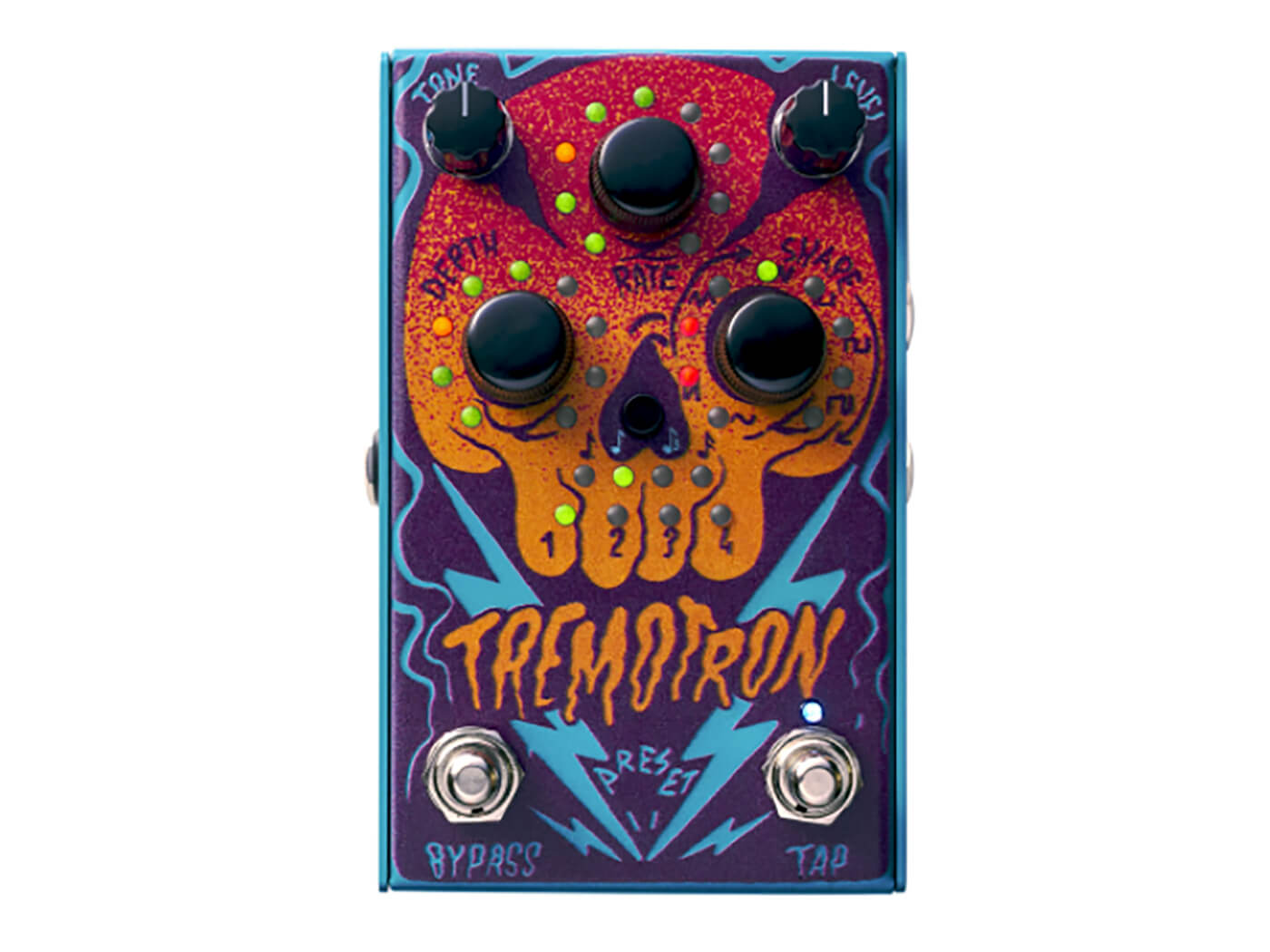
+ Digitally controlled, but fully analogue signal path
+ Like the rest of Stone Deaf’s pedals, it looks amazing
– Expensive
The Stone Deaf Tremotron is unlike any tremolo pedal you’ve seen. In addition to a fully analogue signal path under the hood, it has digital controls, allowing two VCA-based tremolo controls to play at once (if you don’t attempt How Soon Is Now? with this pedal, you’re missing a trick).
It also includes nine waveshapes and switchable presets, as well as a MIDI Out, for when you want to push your onset headache into migraine territory. It’s not cheap, and you’ll need 250mA to power it, but the Tremotron is unmatched for its versatility and innovation.
Price: $321/£249 Description: Digitally controlled dual-analogue VCA tremolo pedal
Controls: Tone, level, depth, rate, shape, tempo division button; bypass and tap tempo footswitches Bypass: True Bypass Mono or stereo: Mono Tap tempo: Yes
Read our full review of the Stone Deaf Tremotron here.
Strymon Flint

+ Reverb bundled in for complete ‘vintage Fender in a box’ experience
+ Classic Strymon attention to detail
– Digital signal path may deter some
Fish and chips, lager and crisps… tremolo and reverb. It just works. Some argue it’s all any guitar player needs in their arsenal. Strymon’s Flint provides exactly that, and then some.
Based on the classic amps coming out of the Fender factory in the early 60s, Strymon’s digital processing impressively recreates the sultry throb of three great analogue tremolos.
On the other side of the pedal, you have three reverbs: one based on a 60s spring reverb, another on a 70s plate and the final on a hall reverb from an 80s rack, the Strymon Flint leads the way in stompbox recreations of vintage-amp effects.
Price: $299/£279 Description: Digital tremolo and reverb pedal Controls: Tremolo and reverb mode selection switches, knobs for tremolo speed and intensity, knobs for reverb mix, decay and colour, Bypass: True bypass Mono or stereo: Stereo Tap tempo: No
